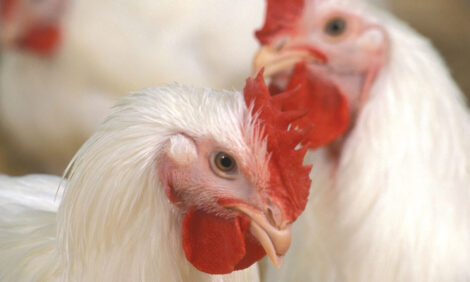



Spirochaetosis (Brachyspira)
Crowshall Veterinary Services offers advice on the diagnosis and control of a disease that is becoming common on free-range poultry farms.


Spirochaetosis is a condition caused by a group of bacteria known as Brachyspira, a type of spirochaete.
Symptoms
The symptoms associated with spirochaetosis can include the following:- failure to gain body weight
- decreased body weight
- production drops in excess of 10 per cent
- mild to moderate diarrhoea
- pasting of vents
- increased numbers of dirty eggs
- feed consumption can decrease
- occasional slight increases in mortality
- more common on multi-age sites.
Diagnosis
In order to diagnose the problem, the flock history and clinical picture should be discussed with your veterinarian. A post mortem examination of faecal samples may be recommended, and it will be necessary to rule out other causes of production drops and diarrhoea. Microscopic identification of the gut contents can be used to visualise the Brachyspira but this cannot be used alone to confirm a diagnosis.
Further identification can be to try and grow the organism by microbiological culture. If Brachyspira are identified, species determination can be used to distinguish non-pathogenic species, i.e. Brachyspira innocens, from pathogenic species including Brachyspira pilosicoli and Brachyspira intermedia.
Treatment
The condition can be treated using antimicrobial therapy. However, there are now no licensed in-feed antibiotics with a nil egg withdrawal period. Therefore, treatments are limited to drinking water medications; licensed products include Tiamutin and Aureomycin (containing tiamulin and chlortetracycline, respectively), both of which do have a nil egg withdrawal period, during and after treatment.
Prevention
Efforts to prevent spirochaetosis centre on optimising site biosecurity and hygiene. A good paddock rotation system can be useful in reducing the infection pressure by limiting faecal/oral transfer. Reducing access to puddles and water on range can be of benefit, as well as continuous water sanitisation of the drinking water system.
Optimising litter quality and fly control are also important measures.
Further Reading
| - | You can contact Crowshall Veterinary Services by clicking here. |
December 2008








